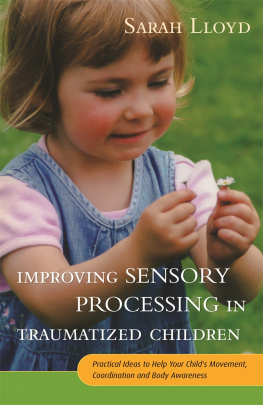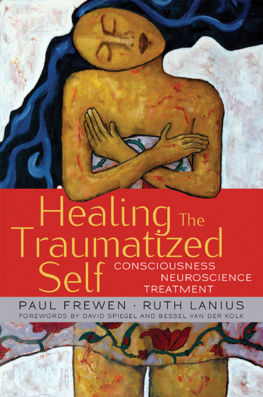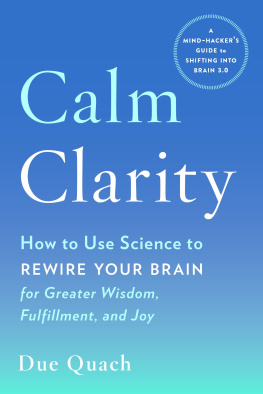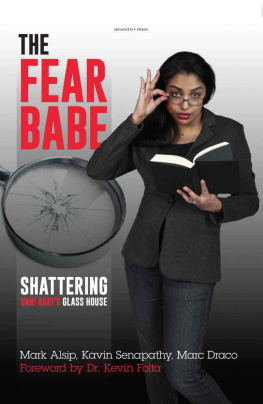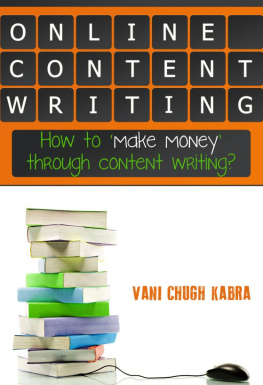Vani Rao - The Traumatized Brain
Here you can read online Vani Rao - The Traumatized Brain full text of the book (entire story) in english for free. Download pdf and epub, get meaning, cover and reviews about this ebook. publisher: Johns Hopkins University Press, genre: Home and family. Description of the work, (preface) as well as reviews are available. Best literature library LitArk.com created for fans of good reading and offers a wide selection of genres:
Romance novel
Science fiction
Adventure
Detective
Science
History
Home and family
Prose
Art
Politics
Computer
Non-fiction
Religion
Business
Children
Humor
Choose a favorite category and find really read worthwhile books. Enjoy immersion in the world of imagination, feel the emotions of the characters or learn something new for yourself, make an fascinating discovery.

- Book:The Traumatized Brain
- Author:
- Publisher:Johns Hopkins University Press
- Genre:
- Rating:3 / 5
- Favourites:Add to favourites
- Your mark:
- 60
- 1
- 2
- 3
- 4
- 5
The Traumatized Brain: summary, description and annotation
We offer to read an annotation, description, summary or preface (depends on what the author of the book "The Traumatized Brain" wrote himself). If you haven't found the necessary information about the book — write in the comments, we will try to find it.
Vani Rao: author's other books
Who wrote The Traumatized Brain? Find out the surname, the name of the author of the book and a list of all author's works by series.
The Traumatized Brain — read online for free the complete book (whole text) full work
Below is the text of the book, divided by pages. System saving the place of the last page read, allows you to conveniently read the book "The Traumatized Brain" online for free, without having to search again every time where you left off. Put a bookmark, and you can go to the page where you finished reading at any time.
Font size:
Interval:
Bookmark:
The Traumatized Brain
A JOHNS HOPKINS PRESS HEALTH BOOK
The
Traumatized
BRAIN

A Family Guide to Understanding Mood, Memory, and Behavior after Brain Injury

VANI RAO, MBBS, MD, and
SANDEEP VAISHNAVI, MD, PhD
Foreword by Peter V. Rabins, MD, MPH
Johns Hopkins University Press
Baltimore
This book was brought to publication with the generous assistance of the J. G. Goellner Endowment.
Note to the Reader: This book is not meant to substitute for medical care of people with traumatic brain injury, and treatment should not be based solely on its contents. Instead, treatment must be developed in a dialogue between the individual and his or her physician. Our book has been written to help with that dialogue.
Drug dosage: The author and publisher have made reasonable efforts to determine that the selection of drugs discussed in this text conforms to the practices of the general medical community. The medications described do not necessarily have specific approval by the U.S. Food and Drug Administration for use in the diseases for which they are recommended. In view of ongoing research, changes in governmental regulation, and the constant flow of information relating to drug therapy and drug reactions, the reader is urged to check the package insert of each drug for any change in indications and dosage and for warnings and precautions. This is particularly important when the recommended agent is a new and/or infrequently used drug.
2015 Johns Hopkins University Press
All rights reserved. Published 2015
Printed in the United States of America on acid-free paper
9 8 7 6 5 4 3 2 1
Johns Hopkins University Press
2715 North Charles Street
Baltimore, Maryland 212184363
www.press.jhu.edu
Library of Congress Cataloging-in-Publication Data
Rao, Vani, 1958
The traumatized brain : a family guide to understanding mood, memory, and behavior after brain injury / by Vani Rao, MBBS, MD, and Sandeep Vaishnavi, MD, PhD ; foreword by Peter V. Rabins, MD, MPH.
pages cm. (A Johns Hopkins Press Health Book)
Includes index.
ISBN 978-1-4214-1795-0 (pbk. : alk. paper) ISBN 978-1-4214-1796-7 (electronic) ISBN 1-4214-1795-2 (pbk. : alk. paper) ISBN 1-4214-1796-0 (electronic) 1. Brain damageComplications. 2. Brain damagePatientsRehabilitation. 3. HeadWounds and injuriesComplications. 4. HeadWounds and injuriesPatientsRehabilitation. I. Vaishnavi, Sandeep, 1973 II. Rabins, Peter V., writer of foreword. III. Title.
RC387.5.R36 2015
617.4'81044dc23 2015002495
A catalog record for this book is available from the British Library.
are by Jacqueline Schaffer.
Special discounts are available for bulk purchases of this book. For more information, please contact Special Sales at 410 -- 6936 or specialsales@press.jhu.edu.
Johns Hopkins University Press uses environmentally friendly book materials, including recycled text paper that is composed of at least 30 percent post-consumer waste, whenever possible.
To our patients with brain injury, who continuously educate and motivate us to do better
CONTENTS
FOREWORD
Traumatic brain injury (TBI) is not a new health care issue, but improvements in trauma care have led to the survival of many severely injured people who are left with the aftermath of an injured brain. In addition, research and clinical experience show that head injuries that in the past were considered insignificant or minor have adverse long-term outcomes.
These changes have occurred in community hospitals, on the battlefield, and on the playing field, and these injuries have been compounded by the development of new ways of inflicting injury. The Iraq and Afghanistan wars have seen the wide use of improvised explosive devices (IEDs) that appear to cause injury through the generation of a large pressure wave, which leads to internal damage in people near a blast. These brain injuries have often occurred in addition to the penetrating wounds that have long been the consequence of war. In the civilian world, the development of protective helmets, seat belts, and improved trauma care have led to more survivors with TBI but also more mood, cognitive, and behavior consequences.
The renewed focus on TBI has led to the realization that we know relatively little about the mechanisms of such injuries and even less about how best to treat people who have experienced them. The recognition that TBI is much more widespread and disabling than was appreciated in the past has been paralleled by the realization that those with TBI require specialized care by knowledgeable professionals. Although it is unfortunate that it has taken a set of tragedies to bring attention to the long-smoldering problem of TBI, the realization of its serious public health impact has resulted in gains in knowledge and long overdue support for clinical care.
In The Traumatized Brain: A Family Guide to Understanding Mood, Memory, and Behavior after Brain Injury , Vani Rao and Sandeep Vaishnavi bring to the care of people with TBI an intimate knowledge of the function of the healthy brain, a knowledge of the types of injury associated with TBI, and a critical examination of management of chronic problems associated with TBI. As experienced clinicians who care for people with TBI, Drs. Rao and Vaishnavi are able to bring a practical eye to this merging of advances in research, clinical knowledge, and awareness of the science supporting the efficacy of available nondrug and drug treatments.
This book will challenge and encourage the reader. Whether an interested lay person, a caretaker, a family member, or a professional in the medical, nursing, or social work fields, the reader will find this pioneering book a useful guide to the complexities of TBI.
Peter V. Rabins, MD, MPH
Baltimore, Maryland
ACKNOWLEDGMENTS
The inspiration for this book comes from The 36-Hour Day , written by Nancy L. Mace and Peter V. Rabins. I read that book as a resident, and I was blown away by the authors descriptions of a very complex disease such as Alzheimers disease in simple segments intended to educate caregivers and give them hope. My heartfelt gratitude goes to Dr. Rabins not only for motivating me but also for the relentless support he gave Sandeep and me as we worked on this book.
I am most grateful to Dr. Constantine Lyketsos, my mentor and guide, for his consistent encouragement from the start of this book to its completion. I am truly indebted to him.
Two dear friends, Dr. Sasikala Vemuri, an internist in Michigan, and Ms. Joelle Ridgeway, health care administrator in the field of brain injury, also provided tremendous help as we worked through the manuscript by meticulously reviewing and commenting on earlier drafts. To them I extend my utmost appreciation.
I am much obliged and thankful to Ms. Jacqueline Wehmueller, Executive Editor, Johns Hopkins University Press, for her support, encouragement, and feedback and for helping us bring this book to fruition. Special thanks go to Ms. Molly Ward and Ms. Barbara Lamb for their skillful review and guidance, and to Ms. Jacqueline Schaffer for turning our simple pencil drawings into beautiful illustrations. This book would not have been completed without the guidance and assistance of this team.
Over the course of years, there have been many teachers, friends, and colleagues who have stood by me and backed me with their support, assistance, and positive comments. I will forever be thankful for their help. I am especially grateful to all who have shaped my career through my interactions with them and their clinical and research work. They include Drs. Gwenn Smith, Vassilis Koliatsos, Kathleen Bechtold, Jason Brandt, Robert Robinson, Ricardo Jorge, Jonathan Silver, David Arciniegas, Thomas McAllister, and Jesse Fann.
Next pageFont size:
Interval:
Bookmark:
Similar books «The Traumatized Brain»
Look at similar books to The Traumatized Brain. We have selected literature similar in name and meaning in the hope of providing readers with more options to find new, interesting, not yet read works.
Discussion, reviews of the book The Traumatized Brain and just readers' own opinions. Leave your comments, write what you think about the work, its meaning or the main characters. Specify what exactly you liked and what you didn't like, and why you think so.




